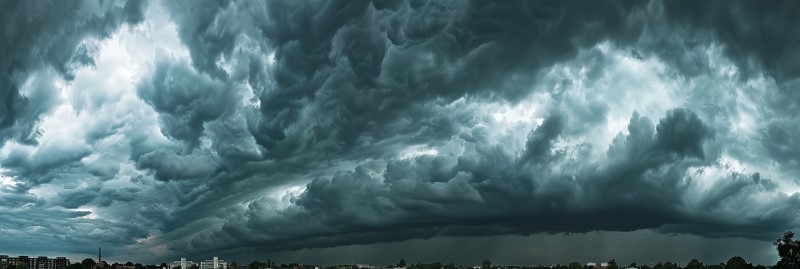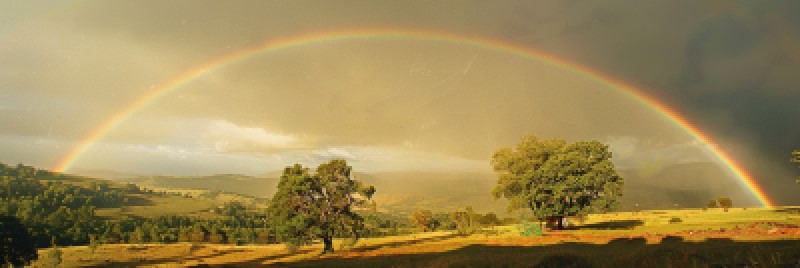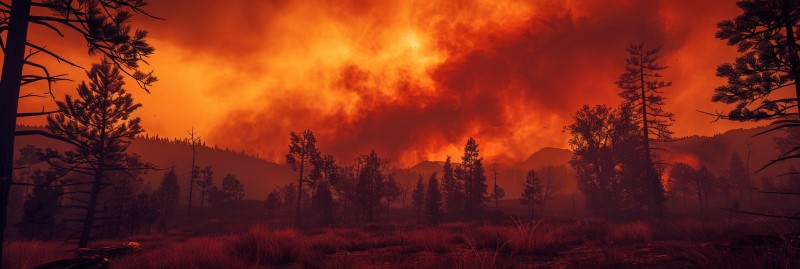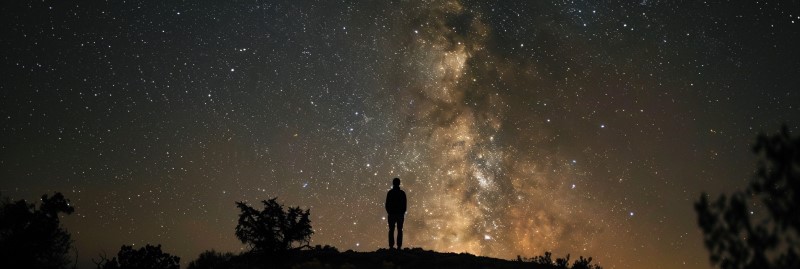KidZone Questions Kids Ask
Why Isn't the Sky Always Blue?
Beyond Blue: The Sky's Many Colors
While we often enjoy a clear blue sky, there are times when it surprises us with different colors.
Stormy Skies: Dark and Ominous

Before a storm, the sky can darken dramatically. Thick clouds block a lot of sunlight, and the water droplets within them scatter light in a way that doesn't favor any particular color, making the sky appear gray. The towering, dense clouds can also cast large shadows, contributing to the darkening effect.
Rainbows: Nature's Colorful Bridge

After the rain, when the sun peeks back out, we sometimes get a magical treat in the sky called a rainbow. Rainbows happen when sunlight meets the raindrops left in the air from a recent shower. Each raindrop acts like a tiny prism, bending and spreading the sunlight into all the colors of the rainbow.
Just like our team of sunlight heroes, each color takes its place, forming a beautiful arch of red, orange, yellow, green, blue, indigo, and violet across the sky. Rainbows remind us that even after a storm, something beautiful can appear, creating a colorful bridge across the sky for us all to enjoy.
The Red and Orange of Wildfire Skies

During wildfires, the sky can turn deep shades of orange and red, even far from the fires. This is because smoke particles scatter sunlight differently than air molecules. The smoke allows more red and orange light to reach our eyes, painting the sky in intense, fiery colors.
The Night Sky: A Canvas of Stars

At night, the sky shows a completely different scene. The absence of sunlight reveals the vast universe beyond our atmosphere. Stars twinkle and the moon shines but the sunlight is hidden away until morning so we don't see colors in the sky at night.
Unique Phenomena: Halos, Sundogs, and Green Flashes

Certain atmospheric conditions can create unique visual effects. Ice crystals in high clouds can form halos around the sun or moon, and sundogs, bright spots on either side of the sun. The elusive green flash, seen just after sunset or before sunrise, occurs when the Earth's atmosphere causes the light from the sun to separate into different colors.
The Role of Earth's Rotation
The daily transition from day to night and back is governed by Earth's rotation. As the planet spins, different parts move into and out of the sun's light. This constant motion creates the cycle of day and night, influencing the color of the sky we see.
The Ever-Changing Sky
The sky's color is a complex interplay of light, atmosphere, and environmental conditions. From the blue of a clear day to the star-filled darkness of night and the unique colors of atmospheric phenomena, the sky continually reminds us of the dynamic nature of our planet's envelope.
In understanding these varied aspects, we gain a deeper appreciation for the atmospheric science that shapes our view of the world above, reminding us of the beauty and complexity of the Earth's atmosphere.